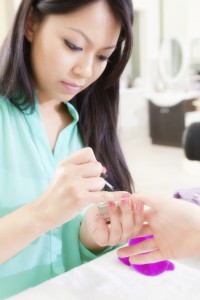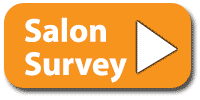Unmasking the Impacts of Toxic Chemicals on Salon Workers
 Salons can be a hazardous place to work given the multiple daily exposures to chemicals of concern. Fortunately, this situation is not inevitable. Best practices, including using less toxic products, improved ventilation, and appropriate protective equipment, can significantly decrease the chance of adverse health impacts of salon work.
Salons can be a hazardous place to work given the multiple daily exposures to chemicals of concern. Fortunately, this situation is not inevitable. Best practices, including using less toxic products, improved ventilation, and appropriate protective equipment, can significantly decrease the chance of adverse health impacts of salon work.
In the long term, salon safety is largely a matter of manufacturer responsibility, to create and produce effective salon products that do not result in impaired air quality in the salon and adverse health outcomes among workers. Until safer salon products are readily available across the board, these tips and strategies can help protect the health of salon workers and owners.
For more information on toxic chemicals in salon products and their potential health impacts – click here.
Tips for Salon Workers
Use less toxic products in the nail salon (when possible) including the following:
- Nail polishes free of dibutyl phthalates, toluene, and formaldehyde
- Nail polish removers free of butyl acetate, methyl acetate, or ethyl acetate
- Nail polish thinners free of toluene or methyl ethyl ketone
Use less toxic products in the hair salon (when possible) including the following:
- Hair sprays labeled as “low VOC formulas”
- Pump spray products rather than aerosols (to reduce inhalation risk)
- Hair straighteners free of formaldehyde or methylene glycol
Use personal protective equipment on a daily basis:
- Wear neoprene or nitrile gloves to protect the skin on your hands.
- Do not reuse disposable gloves.
- Where necessary, use respirators with organic carbon chemical cartridges, or N95 respirator dust masks.
Ensure proper handling, storage, and disposal of salon products:
- Close containers of salon products when not in use.
- Place any trash soaked in chemicals in a trash can with a tight lid.
- Dispose of hazardous waste appropriately.
Order services performed to reduce exposure. For example, cut client’s hair before applying hair dye to reduce exposure of your hands to hair dye.
Use fewer products and smaller amounts of each product when performing services.
Wash your hands before and after performing services to remove any chemical residue.
Consider limiting the salon services offered (especially if certain services already lead to symptoms).
Tips for Salon Owners
Ensure adequate ventilation in the salon:
- Open doors and windows when possible.
- Install a ventilation system with external exhaust and ability to make multiple air changes per hour.
– Exhaust particularly sensitizing and irritating exposures away from the salon workers breathing zone.
– Install nail tables with a built-in local exhaust fan.
– Stock less toxic products in the salon (for examples see above).
– Consider limiting services performed at the salon to exclude services most commonly causing symptoms in workers or clients.
– Ensure appropriate occupational health and safety training for workers on preventive measures.
– Seek “Green Salon” or “Healthy Salon” certification (where available).
– Review the California DTSC Greener Nail Salon checklist for additional ways to green your salon.
– See a list of web resources for salon workers and owners — click here.
Download the Beauty and Its Beast Recommendations fact sheet
 |
Do you work in a salon? We want your feedback! |


